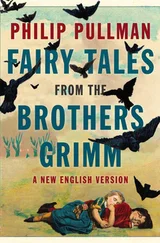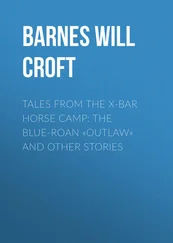1 ...7 8 9 11 12 13 ...19 ‘By October 1945 Beaulieu had pretty well closed down, and by January 1946 SOE had ceased to exist. MI6 didn’t like the organisation, I think they saw SOE as a threat to their existence, and after all both organisations were competing for the same meagre resources. We in SOE all knew that MI6 regarded us as a “load of amateur bandits” – well, we were all amateurs and we were bandits. SOE was made up of lawyers, accountants, teachers, businessmen, bankers and future housewives. None of us were professional spies, but I think we were pretty good at what we did.’
Noreen had left the SOE in September 1945 and, like all agents and members of the organisation, she was sworn to secrecy. They were ordered to sign the Official Secrets Act and effectively told to keep their collective mouths shut.
After the war she put her language skills to good effect and joined the BBC’s French Service, where she remained for five and a half years.
‘Occasionally you would come across an agent from F Section, and we would acknowledge each other and perhaps have a quiet word over lunch or a cup of tea in the canteen, where we’d talk about our time in SOE and catch up on news of old friends such as Harry Ree, ‡Eddie McGuire, George Millar, Odette Churchill, Peter Churchill and Bob Maloubier.
‘Then one day Buck turned up and it was a bit like being back on home ground. Some time later my future husband, Jacques, arrived at the BBC. Jacques had served as a captain in the French 1st Army and under Général de Lattre de Tassigny with the 19th battalion of the Chasseurs Alpins, and was awarded the Croix de Guerre with Bar. We got to know each other and we later married and I moved to France, where I have now lived for 56 years.’
Noreen remains an active member of the Special Forces Club, regularly attending reunions and meetings, where she often hears previously untold stories from her former colleagues of 70 years ago.
*First Aid Nursing Yeomanry.
†British double agent who spied for the KGB.
‡Member of the SOE who started the war as a conscientious objector.
CHAPTER 2
The Two Wars of Jimmy Patch
The Long Range Desert Group
‘Danger has some kind of satanic appeal to me. I am drawn towards it in an octopus-like grip of fear.’
Major-General David Lloyd Owen, the commander of the Long Range Desert Group
In addition to the SOE, the Second World War saw the emergence of private armies, those units which became the special forces. This was partly because the rules of warfare had changed, and the vast distances over which the conflict was being played demanded something new. In the North African campaign, for example, the theatre of operations was the size of Europe, with most of the fighting taking place along or in close proximity to the Mediterranean coast. This meant that small, self-contained military units could disappear into the vastness of the desert and monitor the activities of the enemy unseen and unheard.
Every commander wanted to know what his enemy opposite number was doing or planning, and any unit which could help achieve this was worth its weight in gold. The Long Range Desert Group was created during that campaign in July 1940, about the same time that the SOE became operational, specifically to conduct long-range reconnaissance and raids deep behind enemy lines. It was founded by Major Ralph Bagnold and originally called Long Range Patrol.
When I began carrying out research for this book and inquired amongst veterans of the Second World War who, if anyone, might be able to help me paint a picture of what life was like operating deep behind enemy lines in one of the most hostile environments on earth, one name kept surfacing.
‘Speak to Jimmy Patch,’ I was told by members of the Special Forces Club. ‘He was there, he did the business. Fought in the desert,’ said one veteran who got to know Jimmy after the war, ‘and was captured by the Germans but escaped.’ ‘He’ll have a good tale to tell, if you can get him to talk,’ said another. Clearly Jimmy Patch was something of a legend within the Long Range Desert Group.
So on a cold January morning in 2011 it was with a keen sense of anticipation that I visited Jimmy, now 92, at his wonderfully serene hillside home in rural Kent.
‘I’m not sure there’s very much I can tell you,’ said Jimmy diffidently. ‘But why don’t we have a cup of tea and then we can chat.’
Fortified by a cup of tea and some of my wife’s home-made cake, Jimmy began to talk.
* * *
Jimmy’s life in the special forces began while he was stationed in a large, tented camp on the outskirts of Cairo in the summer of 1941. One day as he walked through the pristine, whitewashed headquarters of the Royal Artillery Depot at Al Maza with his friend Bill Morrison, he saw a note pinned to a noticeboard bearing the following typed message: ‘Volunteers required for special duties with the Long Range Desert Group. Details from the orderly room clerk.’
The two wiry young Royal Artillery gunners, who had long been in search of wartime adventure, looked at each other and smiled.
Almost from the moment of their call-up, a year earlier in May 1940 in the wake of the British Expeditionary Force’s calamity in France, Jimmy, who was born in east London, and Bill, a proud Cornishman of Scottish descent, had been seeking an escape from the drudgery which typified the life of the private soldier during the early war years.
On that early summer’s day within the vast training camp on the outskirts of Cairo, both men thought their prayers had been answered as they joined a growing queue of volunteers who were being assessed for their suitability for ‘special operations’ by Lieutenant Paul Eitzen, a young, diminutive South African who spoke with the clipped, confident tones of a public school boy. Eitzen, a member of the Royal Artillery attached to the Long Range Desert Group, wanted suitable volunteers to boost numbers of a covert unit which had begun experimenting with a 25lb artillery field gun while on operations behind enemy lines.
‘Eitzen was very pleasant to both of us,’ recalled Jimmy, 70 years later. ‘He asked us a few questions, made a quick assessment of our intelligence and our suitability to operate in small groups. He must have been satisfied with Bill and myself because we learnt within a day or so that we were in, or at least attached to, the LRDG. It was probably the easiest interview of my life. I think he sensed our suitability very quickly. We were two young, impressionable men, happy to try anything and full of initiative, and that is what Eitzen was after.’
A few days later Jimmy, Bill and Lieutenant Eitzen left Al Maza in a 15cwt Ford truck, one of several in an LRDG replenishment convoy, and began the long, arduous journey across the scorching desert to the group’s main base at the Siwa Oasis, which was about 350 miles south-west of Cairo and just 30 miles from the Libyan border.
Despite the demands and dangers of undertaking such a mission, Jimmy and Bill were gripped by a sense of excitement which they had not previously experienced as soldiers in an army at war. As the convoy entered the Sahara, Jimmy was immediately struck by the colossal expanse of the North African desert.
‘I was 21 and had never left Britain. Now I was in the desert and the natural beauty was staggering. It was something you couldn’t possibly hope to imagine. I had read about the Sahara in books but to see it with one’s eyes was breathtaking.’
Back in 1941 the wider Army knew little about the LRDG, or any of the so-called ‘private armies’ emerging during the North African campaign. But gradually stories revealing their exploits began to seep out, often in the bars of Cairo, and for men with a sense of adventure the LRDG held a certain allure.
Читать дальше












